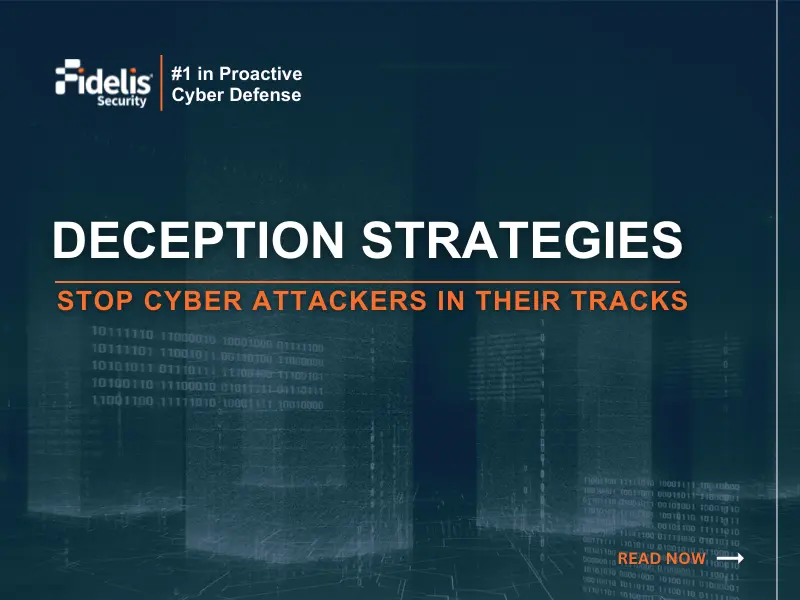Deception technology is the cornerstone of proactive cyber defense. It works on the principle of luring and detecting cybercriminals targeting your organization. It allows oganizations to mislead, detect, and defeat cyber-attacks, and then quickly return to normal IT operations. The primary purpose of cyber deception is to divert the attacker’s attention away from the actual crowned jewels of your organization. Most importantly, deception technology provides insight into malicious activities that could otherwise evade detection within IT networks.
Why Does an Organization need Deception Technology?
Today’s digital adversaries are more sophisticated, and they do significantly more damage to the businesses they impact. Modern cyberattackers also hide deep within digital environments for longer periods of time. This typically gives them plenty of time to study vulnerabilities, and ultimately wreak extreme havoc for unwary organizations.
Active Deception technology is used to divert and lure attackers and digital adversaries away from an organization’s real IT assets. It enables you to deploy deceptive traps to reshape the network attack surface and confuse cyber attackers. These decoys mimic legitimate elements of your IT environment – such as endpoints, network, active directory and IoT – so the intruder believes he is interacting with the real thing. This gives your IT security team the near real-time ability to study an adversary’s behavior and detect, analyze, or defend against zero-day and advanced cyberattacks.
Importance of Deception Technology
- Early Threat Detection: Deception tools have the ability to provide early warning systems. The interaction between attackers and these deceptive decoys triggers alerts, preventing potential damage.
- Reduces Detection Time: The early identification of intruders massively reduces the the duration attackers remain undetected within the network.
- Insights into Adversaries: Deception technology allows you to get insights into the attackers’ tactics, techniques, and procedures (TTPs). This allows organizations to craft more appropriate defense strategies.
- Lower number of False Positives: A lot of traditional security operations and systems trigger multiple false positives while deception technology focuses on real threats. The idea was that real users would never interact with decoys, making it easy to identify attackers.
What Are the Key Capabilities of Deception Technology?
Deception technology helps you identify and block sophisticated digital adversaries before they can damage critical infrastructure and exfiltrate sensitive data.
Your deception platform must:
- Enable you to deceive cybercriminals and lure them into a trap and non-winning environment
- Keep cybercriminals and other rogue actors off-balance and ineffective at all levels of cyber warfare
- Improve your ability to detect and track their tactics, techniques, and procedures (TTPs)
- Dynamically change and re-address the cyber terrain from endpoint to cloud
- Confuse and delay adversaries by providing constantly changing Deception decoys.
Use Cases of Deception Technology
Deception technology is one of the most powerful add-on cyber defense layers which helps in threat detection and anomalous behaviour detection. The threats that it can help defend include:
- Insider threats: Deception technology facilitates the detection and mitigation of insider threats by fostering a dynamic environment that makes it easier to spot unusual behavior. Decoy files or credentials, for example, have the potential to lure hostile insiders into disclosing their true intentions or attempting to gain unauthorized access. Deception decoys also lessen the chance that insider attackers will be able to successfully exfiltrate data.
- Ransomware attacks: The use of deception technology helps add a layer of defense which probes ransomware attackers to interact with decoys instead of legitimate assets. This helps them get captured before they can make any demands to your organization.
- Credential Theft: By dispersing false credentials throughout the network that, if hacked, bring attackers into a monitored and analyzed environment, deception technology prevents credential theft. Furthermore, bait accounts and honey tokens operate as early warning signs of credential harvesting attempts, enabling businesses to quickly safeguard their assets.
- Zero-Day Exploits: The use of deception technologies helps identify zero-day exploits by providing adversaries with attractive targets that are constantly watched. When these decoys are attempted to be exploited, alarms are set out, allowing security teams to quickly investigate and take action—even in the lack of particular signs or compromise indicators.
Fidelis Deception® Technology Is The Answer
Fidelis Deception® enables you to easily reshape the attack surface and lure, detect and defend earlier in the attack lifecycle.
With Fidelis Deception®, you can automatically deploy traps and lures to slow down, confuse, and stop attackers in their tracks.
With Fidelis Deception® natively integrated into Fidelis Elevate®, the XDR platform, SOC teams can shift to a proactive cyber defense and easily find, deceive, and neutralize advanced cyber threats.
The Fidelis Difference

Fidelis Deception® Technology Allows You To
- Create and deploy authentic deception layers automatically
- Expose your attacker in minutes to protect your organization’s valuable assets
- Attract and trap cyber adversaries, malicious insiders, and automated malware at the deception layer
- Reshape the attack surface to change the cyber game and achieve a different battle outcome.
Proactive Cyber Defense With Fidelis Deception
Fidelis Deception® has been combined with EDR and NDR solutions to create Fidelis Elevate®, an open active XDR platform.
Our Active XDR platform brings together three powerful cybersecurity technologies to help organizations change the game to their advantage. Fidelis customers can seamlessly create clones of their subnets and assets that can be populated with fake user accounts and directories and then lay down breadcrumbs for anyone who is trying to discover the network and give a warning when an adversary is on the network.
Integrated deception capabilities make it easier to detect, respond, and neutralize cyber-attacks while adding cost and complexity to the attacker – making it harder for them to cause damage. Not only can organizations counter current cyberattacks, but they can learn more about their digital adversaries and be prepared for new attacks in the future. Regardless of the tactics or technology adversaries use, Fidelis Deception® will always be there to detect adversaries and lead them away from your assets.



